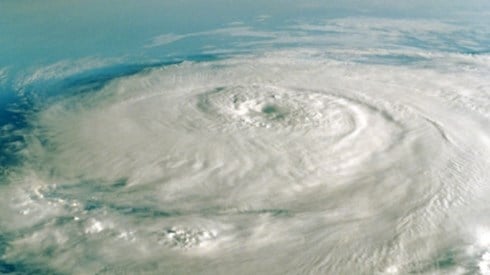What Are Insurance-Linked Securities?

Alex Wright | June 06, 2024

Insurance-linked securities (ILS) are financial derivative instruments whose value is determined by insured loss events.
These losses include non-financial risks such as natural disasters, life and health insurance risks, and other specialty risks, and they underlie the security.
Essentially, insurance-linked securities enable insurers and reinsurers to transfer risk from their balance sheet to capital market investors.
Because they aren't correlated to the traditional financial markets and the volatility they bring, the returns are often better, and they enable investors to diversify their portfolio. By isolating the insurance claim, investors are immune to the impact broader market turmoil may have on the asset bases of those insurers and reinsurers.
Insurance-linked securities appeal particularly to the institutional investment community, such as pension funds, sovereign wealth funds, multiasset investment firms and funds, endowments, and some family office investors and high-net-worth individuals. As well as reinsurance risk transfer tools for the global insurance market, they are also used by some large corporates to access capacity from the capital markets, while governments use them for disaster risk financing.
A big downside, however, is that security holders can lose most or all of their principal investment and interest payments due if a catastrophic event occurs. Other risks are with modeling and liquidity.
History of Insurance-Linked Securities
The ILS market was initially established as an additional source of insurance or reinsurance capacity by transferring traditional risks to the capital markets, starting with the catastrophe bond (cat bond). Since then, it has evolved into multiple different security types and opportunities to transfer risk and make investments.
Typically, insurance-linked securities provide an alternative risk capital source for property catastrophe risks such as windstorm and earthquake. This has enabled insurers to spread their risk and raise capital. They're also used for life insurance exposures such as mortality and longevity, enabling life insurers to transfer their risk as asset-backed notes while releasing their value to the open market through asset-backed notes.
Over time, the market has evolved both in terms of the risk type transferred to the capital markets and how deals are structured to meet investor demands. Today, it also provides ILS-specific investment funds, and there is a growing secondary market for resold bonds.
There are several different types of insurance-linked securities. The most common one is the cat bond, which covers high-severity, low-probability events and typically runs for anything from 1–5 years.
Cat bonds were first issued in the 1990s in the wake of Hurricane Andrew and the Northridge earthquake in California to provide insurers and reinsurers with additional capacity amid a shortage at the time. Since then, the market has mushroomed, with the bonds being grouped by risk level and sold in portfolios in the security markets.
Similar to a fixed-interest bond, the sponsor—usually an insurer, reinsurer, or public insurance authority such as the California Earthquake Authority or the Texas Windstorm Insurance Association—forms a special purpose vehicle (SPV) that issues the bonds to investors, thereby transferring the risk it assumes in insuring a particular catastrophe. That SPV then invests the proceeds into a trust in the form of AAA-rated money market funds, short-term government securities, or cash and issues the sponsor with a reinsurance contract, with the risk being ceded to the buyer in the form of a security. Foreign governments and private companies also use sponsored cat bonds as a hedge against natural disasters.
If an event occurs that triggers a payout, the SPV uses the proceeds as collateral to reimburse the sponsor according to the terms of the transaction. If no event happens, on maturity, the buyer recovers their principal investment along with the agreed-upon interest provided by the premium paid and investment income received.
In some cases, cat bonds can be used to cover multiple events to reduce the chances that investors will lose all of their principal amount. Insurers can also transfer the risk to a reinsurer to protect their portfolio and minimize the liability.
The bonds can also be structured to respond to different triggers, based on the risk's nature and the issuer's needs. Indemnity triggers come into play when losses from a specified event exceed a designated level.
Index-based triggers respond if losses are above a predefined level. Parametric triggers, on the other hand, occur when an event meets certain parameters, such as earthquake location and intensity.
Other triggers include modeled losses, where the sponsor's exposure is calculated by computer models that use objective data such as actual wind speeds or ground acceleration. The bond is triggered if the estimated losses exceed a specified dollar amount.
Another trigger is the hybrid model, which is created by combining any of the trigger types, especially for cat bonds that cover multiple events. It can be structured to cushion investors' losses and/or enhance yield potential.
Other types of ILS include embedded value securitization, extreme mortality securitization, life settlements securitization, longevity swaps, and reserve funding securitization. Then, there are industry loss warranties and fully collateralized reinsurance contracts.
How Do Insurance-Linked Securities Work?
Essentially, ILS works by investors providing coverage for the loss event underlying the securities. They provide the issuer capital up front, with the value of asset being decided by any insured loss resulting from an event.
Aside from losing the whole principal and any unpaid interest, there are other risks associated with cat bonds. These include the fact that the quality and quantity of data being used in the risk modeling vary depending on the peril and region being modeled, which will affect their pricing, yields, and ratings.
Another risk is that of liquidity. As secondary trading of cat bonds is limited, the investor may not be able to sell them. Also, the maturity of some cat bonds can be extended when a trigger may have happened, which can cause their value to plummet, making them even harder to sell.
Added to that, most cat bonds are issued in Rule 144A offerings, which are only available to large institutional investors and aren't subject to the Securities and Exchange Commission's registration and disclosure requirements. As a result, many of the normal investor protections common in most traditional registered investments are missing. While general prohibitions against securities fraud apply to Rule 144A offerings, the lack of public disclosure may make it difficult for both individuals and fund managers to obtain and evaluate the information used to price and structure cat bonds.
Growth of Insurance-Linked Securities
The ILS market has grown exponentially over the last 30 years. A year after records began, in 1997, there was $785.5 million in newly issued securities and volume outstanding in the market, according to the Artemis Deal Directory.
That number rocketed in 2006 following hurricanes Katrina, Rita, and Wilma, jumping to more than $4.69 billion. Today, it stands at a whopping $185 billion and looks set to continue on the same trajectory as interest in this dynamic and ever-changing market continues to rise.
Alex Wright | June 06, 2024






